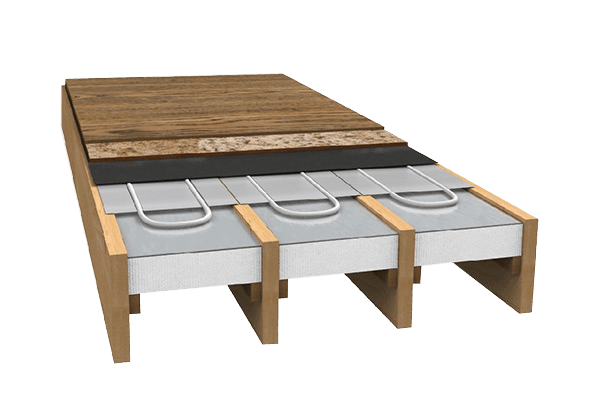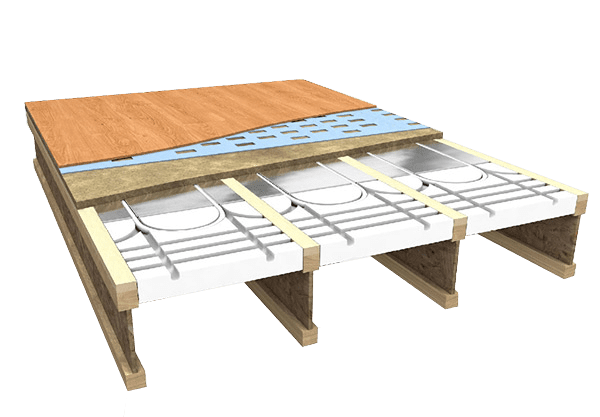Hi,
I am planning to install a wet underfloor heating in the ground floor (suspended timber) of my 1930 house.
I will be running a windproof membrane over and between the joists to hold some insulation. I am currently leaning towards wood fibre panels as the joists are uneven/wraped and fitting cellotex will be likely leave a bunch of gaps.
To support the pipes, there seems to be two main options compatible with my plans:
aluminium spreader plates

or joist panels
made of 70mm polystyrene. I could fill the rest of the cavity (~30mm) with fibrous insulation.

Does anyone have any insight on the best technology between these two?
Polystyrene is about 0.036 W/mK, which is nearly identical to wood fibre, and inferior to PIR (0.022 W.mK).
Spreader plates have more aluminium and should result in better conduction/more even floor temperature.
Some UFH suppliers warned me against spreader plates as they may sag under the weight of the pipes and loose contact with the floorboards.
I am planning to install a wet underfloor heating in the ground floor (suspended timber) of my 1930 house.
I will be running a windproof membrane over and between the joists to hold some insulation. I am currently leaning towards wood fibre panels as the joists are uneven/wraped and fitting cellotex will be likely leave a bunch of gaps.
To support the pipes, there seems to be two main options compatible with my plans:
aluminium spreader plates

or joist panels
made of 70mm polystyrene. I could fill the rest of the cavity (~30mm) with fibrous insulation.

Does anyone have any insight on the best technology between these two?
Polystyrene is about 0.036 W/mK, which is nearly identical to wood fibre, and inferior to PIR (0.022 W.mK).
Spreader plates have more aluminium and should result in better conduction/more even floor temperature.
Some UFH suppliers warned me against spreader plates as they may sag under the weight of the pipes and loose contact with the floorboards.

